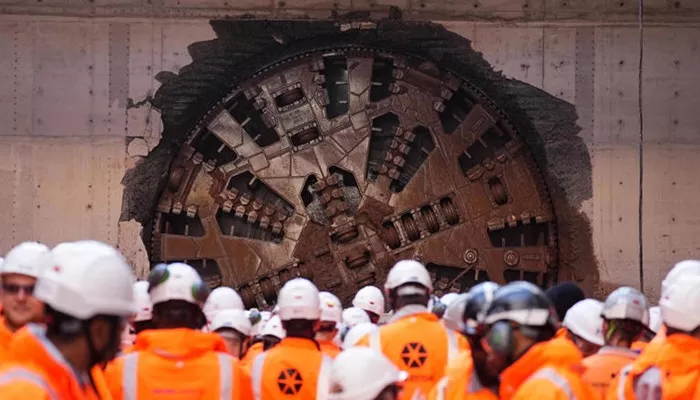A massive HS2 tunnel boring machine has broken through the first section of a 3.5-mile (5.6km) tunnel on the railway’s approach into Birmingham.
The machine, which is 125 metres long and weighs 1,600 tonnes, completed its dig on Friday morning after working for 652 days and nights.
Named Mary Ann by the local community, the machine pays tribute to writer George Eliot, the pen name of Warwickshire-born Mary Ann Evans.
This tunnel is the first of two bores in the Bromford Tunnel. It stretches from Water Orton in north Warwickshire to Washwood Heath in Birmingham, passing beneath motorways and the River Tame.
The breakthrough is the first in Birmingham for the HS2 project and has been called a “significant milestone” by project officials.
Across the 140-mile (225km) route, around 31,000 people are working on the HS2 programme.
A second tunnel boring machine, named Elizabeth after social reformer Dame Elizabeth Cadbury, will complete the second bore of the Bromford Tunnel later this year, an HS2 spokesperson said.
Now that excavation is complete, teams will begin internal work. This includes installing cross passages, laying concrete, fitting base slabs, and building emergency and maintenance walkways.
During peak operation, Mary Ann advanced roughly 30 metres (98 feet) each day. Crews reinforced the tunnel with more than 20,000 concrete segments.
“Today’s breakthrough is a major step forward,” said HS2 Ltd Chief Executive Mark Wild. “I’m extremely proud of the men and women who worked tirelessly to bring Mary Ann and her team home safely.”
Wild added that Washwood Heath will become a key hub for HS2. It will house systems to operate, control, and maintain the railway using the latest digital technology.
Mary Ann removed about one million tonnes of soil during the dig. That earth will be reused to help build a nearby network of 13 viaducts, according to officials.

